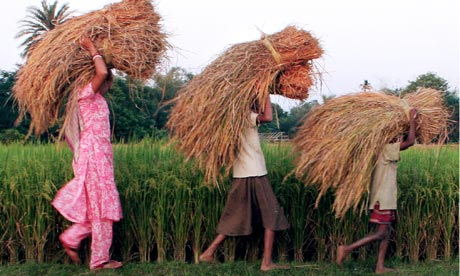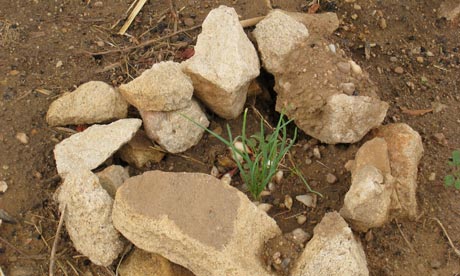PATRICIA COHEN
For more than 40 years, social scientists investigating the causes of poverty have tended to treat cultural explanations like Lord Voldemort: That Which Must Not Be Named.
The reticence was a legacy of the ugly battles that erupted after Daniel Patrick Moynihan, then an assistant labor secretary in the Johnson administration, introduced the idea of a “culture of poverty” to the public in a startling 1965 report. Although Moynihan didn’t coin the phrase (that distinction belongs to the anthropologist Oscar Lewis), his description of the urban black family as caught in an inescapable “tangle of pathology” of unmarried mothers and welfare dependency was seen as attributing self-perpetuating moral deficiencies to black people, as if blaming them for their own misfortune.
Moynihan’s analysis never lost its appeal to conservative thinkers, whose arguments ultimately succeeded when President Bill Clinton signed a bill in 1996 “ending welfare as we know it.” But in the overwhelmingly liberal ranks of academic sociology and anthropology the word “culture” became a live grenade, and the idea that attitudes and behavior patterns kept people poor was shunned.
Now, after decades of silence, these scholars are speaking openly about you-know-what, conceding that culture and persistent poverty are enmeshed.
“We’ve finally reached the stage where people aren’t afraid of being politically incorrect,” said Douglas S. Massey, a sociologist at Princeton who has argued that Moynihan was unfairly maligned.
The old debate has shaped the new. Last month Princeton and the Brookings Institution released a collection of papers on unmarried parents, a subject, it noted, that became off-limits after the Moynihan report. At the recent annual meeting of the American Sociological Association, attendees discussed the resurgence of scholarship on culture. And in Washington last spring, social scientists participated in a Congressional briefing on culture and poverty linked to a special issue of The Annals, the journal of the American Academy of Political and Social Science.
“Culture is back on the poverty research agenda,” the introduction declares, acknowledging that it should never have been removed.
The topic has generated interest on Capitol Hill because so much of the research intersects with policy debates. Views of the cultural roots of poverty “play important roles in shaping how lawmakers choose to address poverty issues,” Representative Lynn Woolsey, Democrat of California, noted at the briefing.
This surge of academic research also comes as the percentage of Americans living in poverty hit a 15-year high: one in seven, or 44 million.
With these studies come many new and varied definitions of culture, but they all differ from the ’60s-era model in these crucial respects: Today, social scientists are rejecting the notion of a monolithic and unchanging culture of poverty. And they attribute destructive attitudes and behavior not to inherent moral character but to sustained racism and isolation.
To Robert J. Sampson, a sociologist at Harvard, culture is best understood as “shared understandings.”
“I study inequality, and the dominant focus is on structures of poverty,” he said. But he added that the reason a neighborhood turns into a “poverty trap” is also related to a common perception of the way people in a community act and think. When people see graffiti and garbage, do they find it acceptable or see serious disorder? Do they respect the legal system or have a high level of “moral cynicism,” believing that “laws were made to be broken”?
As part of a large research project in Chicago, Professor Sampson walked through different neighborhoods this summer, dropping stamped, addressed envelopes to see how many people would pick up an apparently lost letter and mail it, a sign that looking out for others is part of the community’s culture.
In some neighborhoods, like Grand Boulevard, where the notorious Robert Taylor public housing projects once stood, almost no envelopes were mailed; in others researchers received more than half of the letters back. Income levels did not necessarily explain the difference, Professor Sampson said, but rather the community’s cultural norms, the levels of moral cynicism and disorder.
The shared perception of a neighborhood — is it on the rise or stagnant? — does a better job of predicting a community’s future than the actual level of poverty, he said.
William Julius Wilson, whose pioneering work boldly confronted ghetto life while focusing on economic explanations for persistent poverty, defines culture as the way “individuals in a community develop an understanding of how the world works and make decisions based on that understanding.”
For some young black men, Professor Wilson, a Harvard sociologist, said, the world works like this: “If you don’t develop a tough demeanor, you won’t survive. If you have access to weapons, you get them, and if you get into a fight, you have to use them.”
Seeking to recapture the topic from economists, sociologists have ventured into poor neighborhoods to delve deeper into the attitudes of residents. Their results have challenged some common assumptions, like the belief that poor mothers remain single because they don’t value marriage.
In Philadelphia, for example, low-income mothers told the sociologists Kathryn Edin and Maria Kefalas that they thought marriage was profoundly important, even sacred, but doubted that their partners were “marriage material.” Their results have prompted some lawmakers and poverty experts to conclude that programs that promote marriage without changing economic and social conditions are unlikely to work.
Mario Luis Small, a sociologist at the University of Chicago and an editor of The Annals’ special issue, tried to figure out why some New York City mothers with children in day care developed networks of support while others did not. As he explained in his 2009 book, “Unanticipated Gains,” the answer did not depend on income or ethnicity, but rather the rules of the day-care institution. Centers that held frequent field trips, organized parents’ associations and had pick-up and drop-off procedures created more opportunities for parents to connect.
Younger academics like Professor Small, 35, attributed the upswing in cultural explanations to a “new generation of scholars without the baggage of that debate.”
Scholars like Professor Wilson, 74, who have tilled the field much longer, mentioned the development of more sophisticated data and analytical tools. He said he felt compelled to look more closely at culture after the publication of Charles Murray and Richard Herrnstein’s controversial 1994 book, “The Bell Curve,” which attributed African-Americans’ lower I.Q. scores to genetics.
The authors claimed to have taken family background into account, Professor Wilson said, but “they had not captured the cumulative effects of living in poor, racially segregated neighborhoods.”
He added, “I realized we needed a comprehensive measure of the environment, that we must consider structural and cultural forces.”
He mentioned a study by Professor Sampson, 54, that found that growing up in areas where violence limits socializing outside the family and where parents haven’t attended college stunts verbal ability, lowering I.Q. scores by as much as six points, the equivalent of missing more than a year in school.
Changes outside campuses have made conversation about the cultural roots of poverty easier than it was in the ’60s. Divorce, living together without marrying, and single motherhood are now commonplace. At the same time prominent African-Americans have begun to speak out on the subject. In 2004 the comedian Bill Cosby made headlines when he criticized poor blacks for “not parenting” and dropping out of school. President Obama, who was abandoned by his father, has repeatedly talked about “responsible fatherhood.”
Conservatives also deserve credit, said Kay S. Hymowitz, a fellow at the conservative Manhattan Institute, for their sustained focus on family values and marriage even when cultural explanations were disparaged.
Still, worries about blaming the victim persist. Policy makers and the public still tend to view poverty through one of two competing lenses, Michèle Lamont, another editor of the special issue of The Annals, said: “Are the poor poor because they are lazy, or are the poor poor because they are a victim of the markets?”
So even now some sociologists avoid words like “values” and “morals” or reject the idea that, as The Annals put it, “a group’s culture is more or less coherent.” Watered-down definitions of culture, Ms. Hymowitz complained, reduce some of the new work to “sociological pablum.”
“If anthropologists had come away from doing field work in New Guinea concluding ‘everyone’s different,’ but sometimes people help each other out,” she wrote in an e-mail, “there would be no field of anthropology — and no word culture for cultural sociologists to bend to their will.”
Fuzzy definitions or not, culture is back. This prompted mock surprise from Rep. Woolsey at last spring’s Congressional briefing: “What a concept. Values, norms, beliefs play very important roles in the way people meet the challenges of poverty.”
http://www.nytimes.com/2010/10/18/us/18poverty.html?_r=1&ref=us&pagewanted=all

















